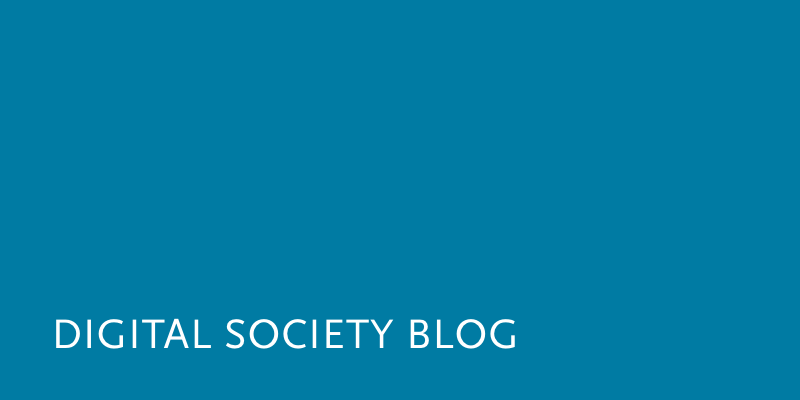Making sense of our connected world

Public breakfast
Exchange offer: coffee for ideas of digital public
Which theories do you know concerning the digital publicity? Which of them do you think are capable of bearing, which are rather dispensable? Come by to let us know about your knowledge and we are would like to discuss your ideas.
Science has eyed the matter of publicity for centuries. Everyone dealing with the Internet, will come across questions linked up with the public, sooner or later. It seems as if something has changed – but what exactly?
As of late, a small group in the HIIG poses this kind of questions. Therefore it gets together once a month for breakfast to discuss theories of digital public while having coffee and a sweet bread roll with jam.
We present each other approaches of theories which various scientific disciplines developed. Then, we would collect, compare and discuss them together. Thus, what would be more obvious as opening the digital breakfast to a wide and wild public? Thence you are cordially invited to come by for breakfast and swap ideas, 6 Nov 2013, 10 am, to HIIG room at Bebelplatz. You may bring texts, ideas and everything to be eaten for breakfast. Please send us a short message with an informal application.
Prior to this, I like to throw some thoughts to digital publicity into the ring. We are happy about any kind of feedback within this GoogleDoc.
Appetiser Habermas
Even Habermas, whose theory on change of public structure in 1962 acts as an essential reference, was bound to this issue. Just recently (in a philosophic way of time calculation), he had to pose himself the question if, and if so, how the Internet altered the public. From his standpoint the censorship of authoritarian regimes is undermined by the Internet. However, he remarks the danger or at least disadvantage of the “public space to fragment into random groups only held together by very special interests.”
His primal ideal of a deliberating public targeted one sole common shared space of communication. In this room, everybody should be able to participate equally and also equally respected. To his mind, consensus would be reached in an ideal speech situation. The better argument counted, not the individual interest of the single participant taking part in the public discourse.
This ideal identified the democratic deficits in capitalist, liberal democracies. Until today, these reality lags behind this ideal – with or without Internet.
Mass media remains the main course
Communicative options changed since mass media have not stayed alone on the field of public communication as also possibilities altered of what generally can become public.
Thus, do we again face a structural transformation of the public? And does it mean therefore a change of society and possibilities of civil participation will newly-arrange? After all, is there still a point to talk about the public itself or are there in fact several publics already? Would the idea by Habermas of a common discourse be outdated? I do wonder how relevant the Internet is de facto for a political public and how it is going to develop over the next 20 years.
Admittedly, news shows web-videos by now, but the general public basically still relies on familiar mass media. People catch up on subjects of the time in newspaper and TV. That their information is available online, too, does not change the fact, that professional media institutions are the bottleneck of the public. Not so?
Potpourri
The Internet alone probably will never organise and structure one public space, but which role will the digital public play in models of the future? We already live in a time when it is not possible to imagine a society without using digital communication and media.
Stefan Münker quite recognises a structural change in the change from the analog age to the digital era and admits there is a sphere of influence of the emerging digital public. Even though, “an emergence of a radically different, utopic counterworld – how web-idealists pictured themselves from the very beginning” is nowhere visible.
Flashpublic for Dessert
I liked thought by Jack Bratich, I came across in one of his articles. He talks of “flashpublics” as they were “reminiscent of flashmobs, as flashpublics are designed to assemble people rapidly for an event. However, this flashcollective is specifically issue-oriented and more widely dispersed (as the eventual “meeting spot” itself is unknown and distributed). The flash of the flashpublic is a quick mobilization of attention and sharing towards a predefined political objective. It involves what Anna Gibbs calls an “affective contagion” tied to processes that early 20th century social theorists associated with sympathy, suggestion, even mass hypnosis.”
In my opinion, this concept explains quite accurate how public is generated in social media. Digital public is eventful and arises even where it was originally not intended to happen. On the one hand, not everybody, wishes to address the public, will find an adequate audience. On the other hand, it is not always planned if somebody finds himself being the middle of public dispute. Digital publics have a strong impact but no stability and continuity as we are used to be transported by TV. In contrast, in the Internet there is no “same time, same place, same wave”.
Finally, what do we think about it?
An exciting question is how the above shown changes of political public structures could be interpreted. Is the civil society going to lose its meeting point because we are communicating on different channels? Or will it rather gain plurality through low-threshold participation?
Hannah Arendt disagreed with Habermas in one crucial point which may be quite interesting for today’s discussion. Arendt did not believe the consensus to be the goal of public dispute but rather spotted politics in a conflict between pluralities of opinions existing side by side.
The possible ways to communicate via the internet made the network of the public more complex – but possibly it is this complexity, that fits our recent societies best.
This post is part of a regular series of articles by doctoral candidates of the Alexander von Humboldt Institute for Internet and Society. It does not necessarily represent the view of the Institute itself. For more information about the topics of these articles and associated research projects, please contact presse@hiig.de.
This post represents the view of the author and does not necessarily represent the view of the institute itself. For more information about the topics of these articles and associated research projects, please contact info@hiig.de.

You will receive our latest blog articles once a month in a newsletter.
Research issues in focus
The Human in the Loop in automated credit lending – Human expertise for greater fairness
How fair is automated credit lending? Where is human expertise essential?
Impactful by design: For digital entrepreneurs driven to create positive societal impact
How impact entrepreneurs can shape digital innovation to build technologies that create meaningful and lasting societal change.
Identifying bias, taking responsibility: Critical perspectives on AI and data quality in higher education
AI is changing higher education. This article explores the risks of bias and why we need a critical approach.




